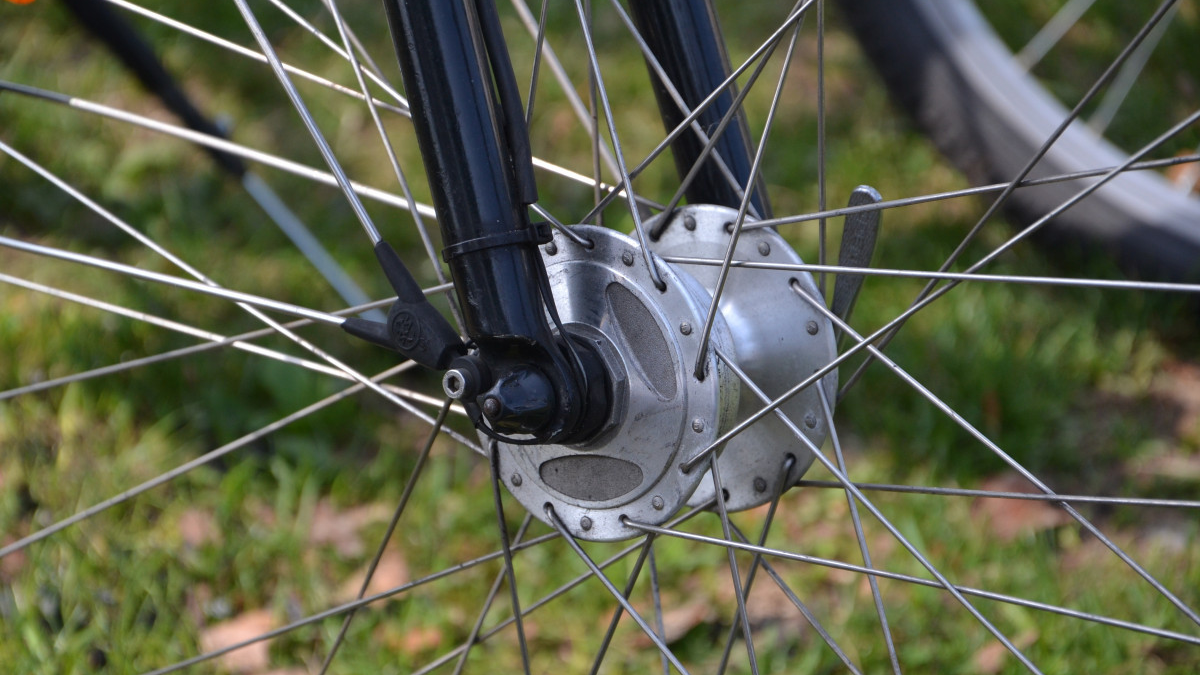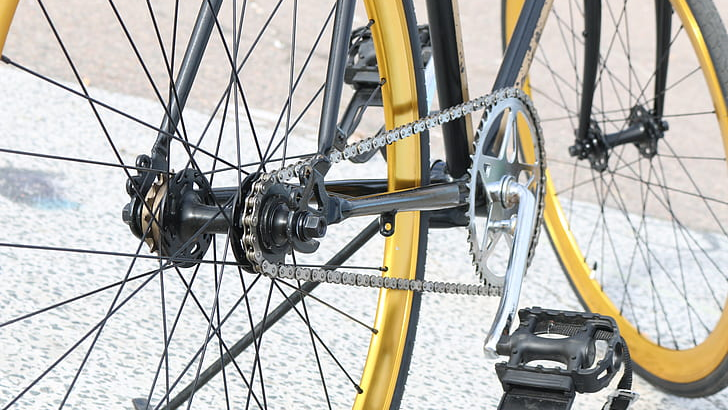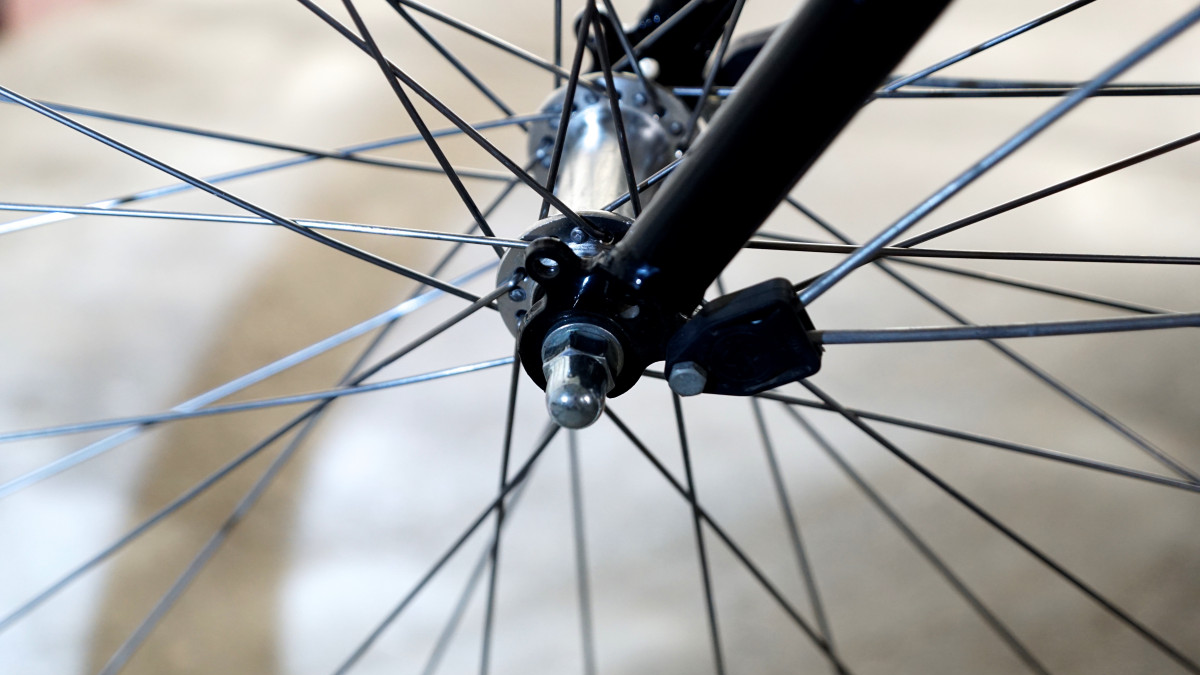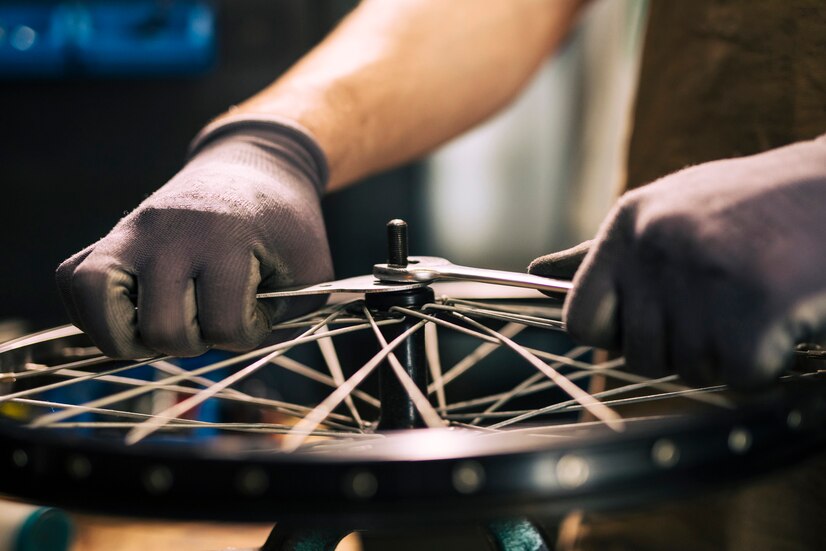Understanding how to tighten bike spokes is an essential skill in the repertoire of any cyclist. The proper tension of spokes is integral to maintaining the stability, performance, and safety of your bicycle.
When spokes are loose, it can lead to issues such as wheel wobbling, compromised handling, and even accidents. Therefore, having the knowledge to identify and address loose spokes is invaluable for any rider dedicated to bike maintenance.
In this guide, we’ll take a methodical approach to tightening bike spokes, ensuring we respect the delicacy of the process. From recognizing signs of loose spokes to utilizing the appropriate tools and techniques, we’ll cover everything you need to know to ensure your bike’s wheels are in optimal condition.
So, let’s learn how to tighten bike spokes!
What Are Bike Spokes?
Bike spokes are slender rods or wires radiating from the center of the wheel to the outer edge, playing a pivotal role in weight distribution and wheel strength. They work in tension, not compression, which allows them to support the wheel under the load of the rider.

Traditional round spokes are common and versatile, while bladed spokes, with their flattened surfaces, are designed to cut through the air more efficiently, offering an aerodynamic advantage.
Recognizing when spokes need tightening is key; listen for creaks, observe any lateral wheel movement, or check if the wheel is true by spinning it. These signs indicate it’s time to adjust the tension to maintain your bike’s performance and safety.
Regular checks and adjustments can prevent issues and extend the life of your wheels.
How to Identify Loose Spokes?
Identifying loose spokes is essential for maintaining your bicycle’s performance. A clear symptom of loose spokes is a wobbling wheel; when spinning, the wheel should remain stable without lateral movement.

Uneven tension can also be a telltale sign; by squeezing parallel spokes together, you should feel consistent resistance. If some spokes feel looser than others, they likely need adjustment.
Additionally, be attentive to any unusual clicking sounds emanating from the wheel while riding, as this can indicate loose spokes. Regular inspection and addressing these symptoms promptly can prevent further complications, ensuring a safer and more enjoyable cycling experience.
Keep your wheels in check, and they’ll support every journey you undertake.
Tools & Materials Needed
Before learning how to tighten a bike spoke, you must have the following tools and materials for a successful adjustment.
- Spoke Wrenches
- Truing Stand
- Lubricant
- Tension Meter
Together, these tools empower cyclists to maintain their wheels like a pro, ensuring each ride is smooth and safe.
How to Tighten Bike Spokes?
Follow these detailed steps on how to tighten spokes on a bike:
1. Preparing Your Bike
Before tightening your bike spokes, it’s important to prepare your workspace and bike. First, choose a well-lit area to ensure you can see the components clearly and avoid any mistakes.

Safety is important, so consider wearing protective eyewear to shield your eyes from any potential debris. Next, secure your bike in a stable position. If you have a bike stand, use it to elevate the bike for easy access to the wheels.
Otherwise, turn the bike upside down, resting it on the handlebars and seat. Ensure the bike is steady and won’t shift during maintenance. This setup not only facilitates easier access to the spokes but also promotes safety and efficiency as you work on tightening them to perfection.
Proper preparation sets the stage for a successful and safe spoke-tightening process.
2. Assessing Spoke Tension
Spoke tension is crucial for the integrity of a bicycle wheel, affecting both performance and safety. Proper tension ensures the wheel remains true and durable, while uneven tension can lead to misalignment and premature wear.

To assess spoke tension, begin by spinning the wheel and observing any lateral movement or wobble. Next, use a spoke wrench to gently turn each spoke nipple, feeling for uniform resistance and listening for a similar pitch when plucked.
A tensiometer can provide a more precise measurement, but a systematic manual check can suffice for regular maintenance. Adjust the tension by tightening or loosening the spokes, working in quarter-turn increments and frequently rechecking the wheel’s trueness.
This process not only optimizes wheel performance but also extends its lifespan, making it a vital skill for cyclists and mechanics alike. Maintaining consistent spoke tension is key to ensuring a smooth ride and reliable wheel function.
3. Tightening Loose Spokes
Identifying and tightening loose spokes is essential for bicycle maintenance to ensure optimal performance and safety. To spot a loose spoke, spin the wheel and watch for irregularities in its rotation.

A wobbly wheel often indicates a tension imbalance. Gently squeeze pairs of spokes around the wheel; a noticeable difference in flex suggests which ones require attention. When tightening, use a spoke wrench to turn the nipple clockwise, incrementally adjusting each spoke to maintain even tension.
It’s important to make small adjustments, no more than a quarter turn at a time, and to check the wheel’s trueness after each adjustment. This methodical approach ensures that the wheel remains balanced and the spokes are evenly tensioned, contributing to a stable and smooth ride.
Regular checks and adjustments can prevent further loosening and maintain the longevity of the wheel. Remember, patience and precision are key to successful spoke maintenance.
4. Fine-Tuning and Truing the Wheel
Fine-tuning and truing a wheel are critical steps in bicycle maintenance, ensuring a smooth and efficient ride. Truing is the process of adjusting the tension of the wheel’s spokes to straighten the rim both laterally and radially.

This is vital for optimal performance and longevity of the wheel. After tightening any loose spokes, place the wheel on a truing stand or flip the bike and use the frame as a reference point.
Spin the wheel and look for side-to-side wobbles or up-and-down hops. Using a spoke wrench, adjust the tension by tightening or loosening the spokes. Work in small increments, focusing on the most noticeable bends first.
Alternate between lateral and radial adjustments to maintain even tension and wheel strength. Regular truing prevents uneven wear and extends the life of the wheel, making it an indispensable skill for cyclists aiming to keep their bikes in top condition.
Maintenance Tips
Regular bicycle maintenance is key to ensuring a smooth ride and prolonging the life of your bike. After adjusting your spokes, it’s important to double-check their tension. Spin the wheel and listen for consistent tones from the spokes, indicating even tension.

If discrepancies are found, make minor adjustments using a spoke wrench until the tension is uniform. Additionally, applying a light lubricant to the spoke threads can prevent rust and allow for easier future adjustments.
Protect your wheel by conducting regular inspections, looking for signs of wear or damage, and addressing issues promptly. This proactive approach to maintenance will keep your bicycle in top condition, enhance performance, and help avoid costly repairs down the line.
How to Tighten Bike Spokes Without a Spoke Wrench?
Tightening bike spokes without a spoke wrench is a handy skill for cyclists. If you find yourself with loose spokes and no wrench, you can use common household items as a makeshift tool. First, identify the loose spokes by spinning the wheel and feeling for slackness.

Once located, a small adjustable wrench or even a pair of pliers can substitute for a spoke wrench. Gently grip the nipple of the spoke, which connects to the rim, and turn it clockwise to tighten.
Be cautious not to over-tighten, as this can cause the wheel to become untrue. Work in small increments, checking the wheel’s alignment frequently by spinning it and observing for wobbles. If the wheel starts to wobble, loosen the spokes slightly until it spins straight.
This method won’t replace a proper spoke wrench, but it can be a temporary solution to keep you riding until you can perform more thorough maintenance. Remember, regular checks and proper tools are the best way to maintain your bike’s performance.
Conclusion
Tightening bike spokes is a crucial aspect of bicycle maintenance that ensures a smooth and safe ride. Begin by inspecting the wheel for any irregularities and identifying loose spokes. Use a spoke wrench to carefully adjust the tension, turning clockwise to tighten.
It’s essential to adjust in small increments, checking the wheel’s trueness regularly. While this task can be performed at home, it’s important to conduct regular maintenance checks and not hesitate to consult a professional for more complex issues.
Learning how to tighten bike spokes effectively can keep your bicycle in top condition, providing a reliable and enjoyable cycling experience.
FAQs
Over-tightening spokes can warp the wheel, causing uneven riding and potential wheel damage.
Loose spokes can lead to an unstable wheel, affecting bike handling and safety.
Riding with a loose spoke risks wheel wobbling and damage, compromising safety.
Spokes should be checked and tightened every few months or after intense or prolonged rides.



